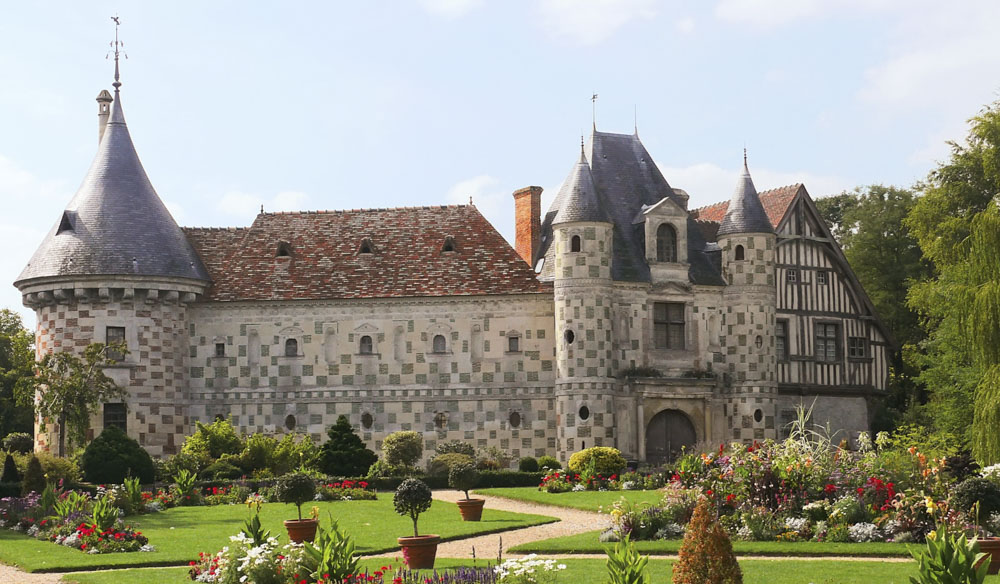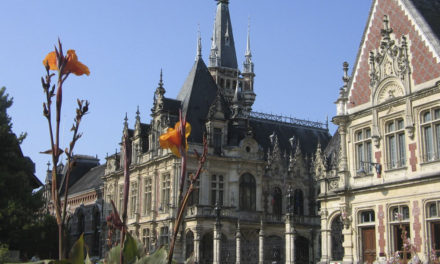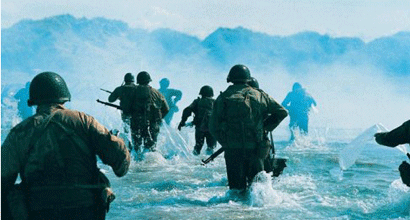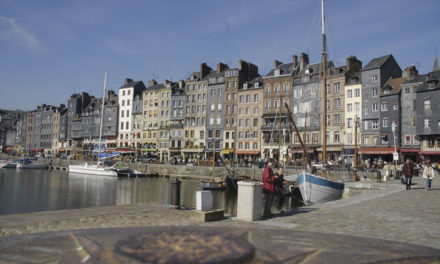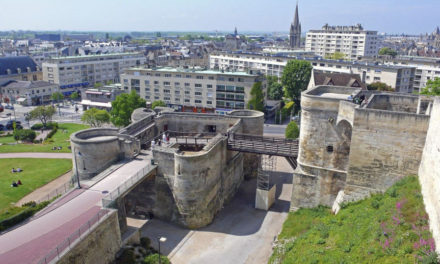The Château of Saint-Germain de Livet – Copyright Atout France/CDT Calvados.
Situated in Lower Normandy, Calvados is characterised by the pretty countryside of the Pays d’Auge with its apple orchards and half-timbered houses, some of which have thatched roofs, known as ‘colombage’. Agriculture dominates the economy of this department and production of butter, cheese (especially Camembert and Pont-l’Eveque), cider and Calvados, the apple brandy that takes its name from the area, are much in evidence in the culinary dishes for which the region is famous. Facing the English Channel, Calvados also offers a huge variety of fresh fish and shellfish served à la Normande with a superb choice of local produce from market stalls offering colourful fresh fruit and vegetables. This is one of the most popular tourist areas of France because of its delightful seaside resorts, its naturally verdant countryside and the vast areas of woodland which support an enviable diversity of wildlife.
Calvados is rich in history and many of the towns and villages are interesting to visit including Beuvron-en-Auge which is a listed village on the cider route. With its ancient manoirs, a covered marketplace and craft centres, this is also the home of a celebrated cider festival. In June 1944, Allied forces landed on the beaches of the Bay of the Seine. Several locations along the coast are famous for their historic significance during the Battle of Normandy including Juno Beach at Courseulles-sur-Mer and Arromanches.
Towns in Calvados
Book a Hotel in Calvados
Honfleur
The picturesque “Vieux Bassin’ of Honfleur was the subject for many artists including British water colourist Bonington, the French artist Boudin and, later on, the Impressionists. Many explorers embarked on their adventures from this very port but nowadays the scene is of yachts and the fishing fleet and diners enjoying the ‘fruits de mer’ in the many delightful restaurants. Along the coast are the resorts of Deauville and Trouville, the former a favourite with Parisians, as much for its racecourse and Casino as for its elegant boutiques and the smart beach with huts bearing the names of Hollywood stars of the twenties. Across the river, Trouville is less pretentious but equally delightful.
Caen
The port of Caen, capital of the department, was badly damaged in the war but retains some vestiges of the castle ramparts and two Abbeys built by William the Conqueror. His grave in the Abbey is marked by a simple stone slab. The fascinating museum, ‘a memorial to peace’, charts the events from 1918 up to the D-Day landings and is a perfect prelude to visiting the beaches of Omaha, Utah, Sword, Gold and Juno. To the south of Caen is an area quaintly described as the ‘Suisse Normande’ although the countryside whilst attractive, is scarcely alpine.
Bayeux
At Bayeux one can see the incredible tapestry detailing the victory of William the Conqueror at Hastings in 1066. William was present at the consecration of the Cathédrale Notre Dame et Vieux Bayeux. The first town to be liberated in the D-Day landings, it was here that De Gaulle gave his first emotive speech on French soil. In the old part of Bayeux is the Baron Gérard Museum (Bayeux porcelain, lace and paintings). At Falaise, a local tanner’s daughter gave birth to William the Conqueror. You can visit the 11th Century Medieval Castle built by William. Ravaged in the ‘Battle of the Falaise Gap’ in World War II, to which a museum is dedicated, the castle has been recently restored. Also worth visiting are the towns of Vire, Lisieux with its pretty colombage houses and Pont l’Eveque, home of the delicious strong cheese for which it is known.
| Title | Address | Description |
|---|---|---|
Calvados | Calvados, France |

